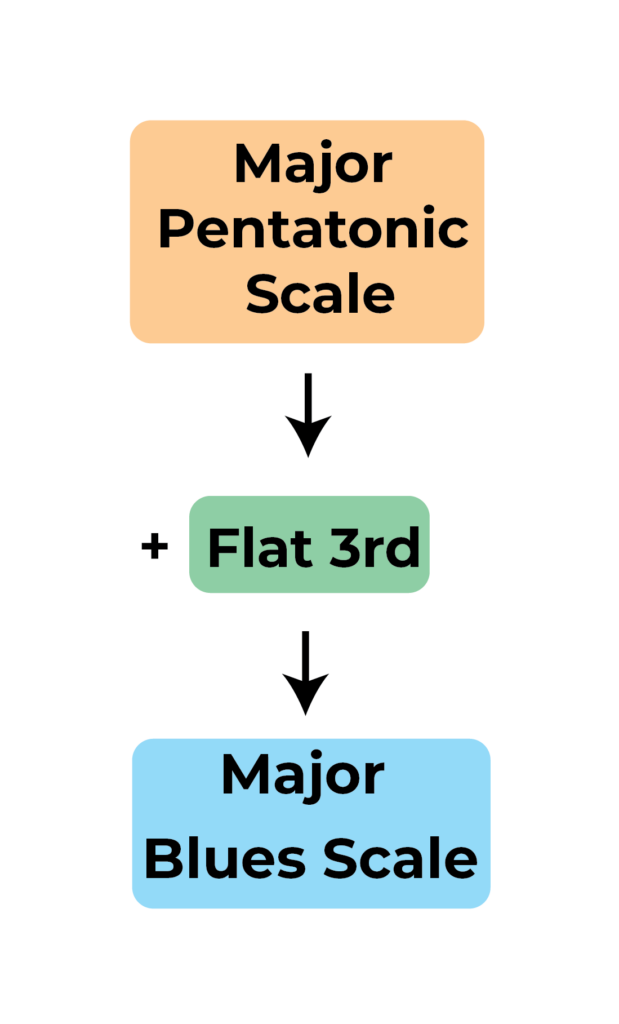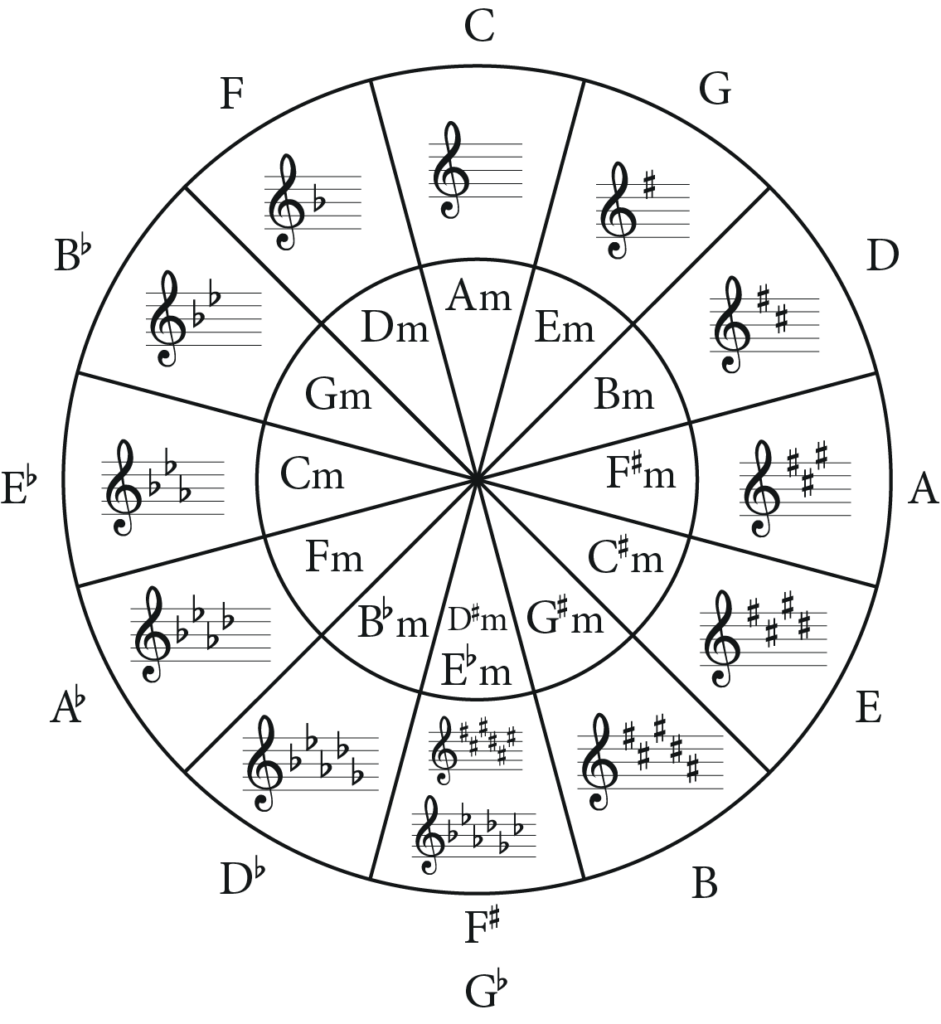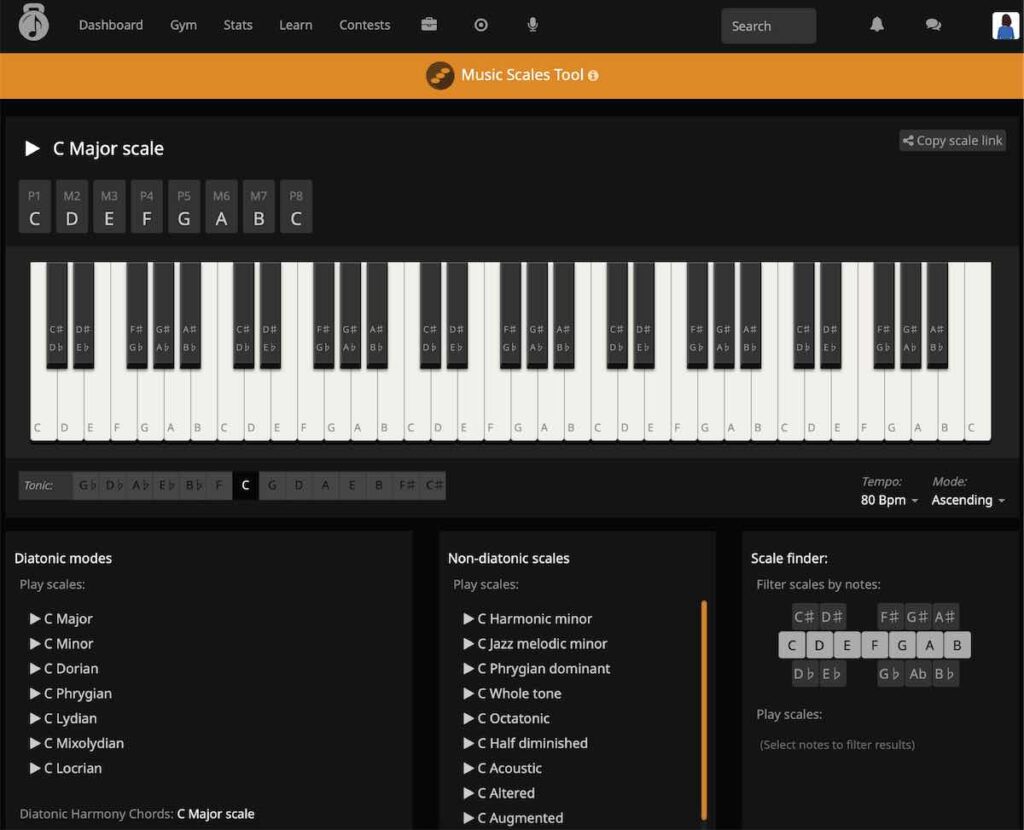
5 Shapes of the A sharp Major Blues Scale
Position 1

Position 2

Position 3

Position 4

Position 5

Here’s what each shape sounds like and how all the shapes fit together on the fretboard.
Creating the A sharp Major Blues Scale
The best way to create the A sharp major blues scale is to start with the A sharp major pentatonic. This is a five note scale made from the 1st, 2nd, 3rd, 5th and 6th of the A sharp major scale.

To this we add a flattened 3rd note and we have the A sharp major blues scale. You can think about it as the major pentatonic scale with an added note, so we get a flattened 3rd and major 3rd in the same scale.

The flattened 3rd (b3) adds dissonance and leads the ear to want to resolve this up to the major 3rd. This allows musicians a greater range of emotions than the major pentatonic.
Relative Minor and Relative Major
As the major blues scale is based on the major pentatonic, its worth taking a look at the relationship between relative major and minor.
It is the minor pentatonic that many guitarists learn first. This is made from the 1st, 3rd, 4th, 5th and 7th degrees of the natural minor scale. It is related to the major pentatonic because all major and minor scales share the same key signatures.
To understand this we need to know what relative major and minor keys are. If we look at the circle of fifth below you can see that for each major key we have a minor key with the same key signatures (the same number of sharps or flats).

For example C major and A Minor both have no sharps or flats. The only difference is that A minor starts on an A natural and C major starts on a C natural.
It can be confusing for beginner guitarists to realise that the major pentatonic shapes are the same as the minor pentatonic shapes. The key thing to remember it that the root note of the scale is different and therefore in a different place on each shape.
The blues note in both relative major and minor blues scales is also the same. Thinking about our example above, both C major blues scale and A minor blues scale have an Eb blues note.
A sharp major is enharmonically equivalent to B flat major. This means that A sharp major has a relative minor key of G minor.
Backing Tracks for C Major Blues Scale
Practising scales can be tricky. You can run up and down them, play them in thirds, of use arpeggios to help you. Improvising over backing tracks are another great way to improve your playing and knowledge of scales.
Here are a few tracks you can use but remember that you could use any song in the key of A sharp Major.
Ear Training and Scales
To develop as a musician you’ll want to be able to recognise scales by ear. This is where ear training comes in. My recommendation for this is Tonegym as they have a comprehensive and fun program for training your ears! It’s what has gotten the best results with for my own students.
In the ‘tools’ section of their site, Tonegym even have a scale tool that allows you to listen virtually any scale.
For an in-depth look at ear training, here’s my full review of Tonegym.

Songs that use The Major Blues Scale
Many guitarists use major blues and minor blues scale for different effects within the same song. This means that it would be misleading to say that only the major blues scale is used in any one song.
Instead I have listed a few famous examples of songs in a major key that really lend themselves to the major blues scale.
‘Honky Tonk Woman’ – The Rolling Stones (G major Blues Scale)
“Honky Tonk Women” by The Rolling Stones is an electrifying rock classic that has a vibrant and infectious energy. With its iconic guitar riffs, groovy rhythm, and Mick Jagger’s charismatic vocals, this timeless hit it a staple in the rock ‘n’ roll hall of fame.
‘Johnny B. goode’ – Chuck Berry (Bb major Blues Scale)
“Johnny B. Goode” is a timeless rock and roll classic that epitomizes the energy and spirit of the genre. Written and performed by Chuck Berry, this iconic song showcases his signature guitar riffs and storytelling lyrics, making it a cornerstone of rock music history.
In the main lick of the song uses a combination of the major and minor blues scale.
‘Pride and Joy’ – Steve Ray Vaughan (E flat Major Blues Scale)
“Pride and Joy” by Stevie Ray Vaughan is a vibrant blues-rock anthem that captures the essence of his virtuosic guitar playing. With its catchy rhythm and soulful vocals, the song exemplifies Vaughan’s mastery of the genre and remains a beloved staple of his repertoire.
What’s next….?
- Learn the A sharp Minor Blues Scale
- Pick other scale to master with our range of scales blogs.
